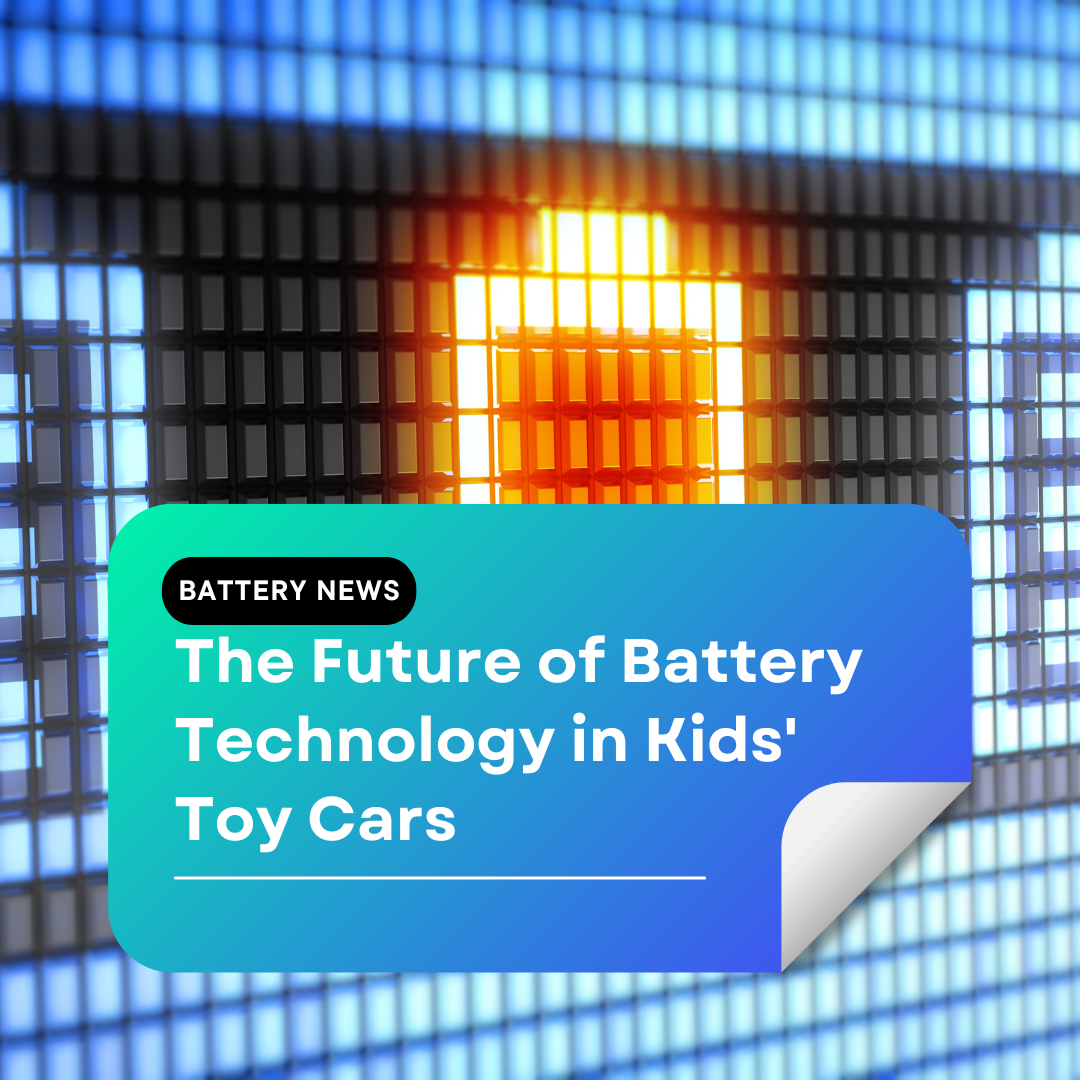
Updated: 17.4.25
As technology races ahead, one area quietly undergoing transformation is the battery powering your child’s favourite ride-on toy car. Nothing dims a fun afternoon faster than a toy car running out of juice. But what if their toy lasted longer, charged faster, and ran smoother?
Thanks to rapid developments in battery tech, this might soon become a reality. Let’s explore how tomorrow’s battery innovations could supercharge the way kids play today.
Why Battery Tech Matters in Toy Cars
Battery life, charge speed, weight, safety, and cost – these are the key ingredients that make a toy car enjoyable and reliable. Whether you own a 12V ride-on or a 6V ride-on, understanding battery types and upgrades can mean longer playtime and fewer breakdowns.
Rapid Advancements: From AA to Lithium
Battery tech has come a long way — from the humble AA to high-capacity lithium-ion cells. These newer batteries pack more power into a smaller space and recharge faster, setting the benchmark for electric mobility across industries — from cars to toys.
Game-Changing Developments: Solid-State & Lithium Metal
New chemistries like solid-state and lithium metal batteries promise lighter, safer, longer-lasting power sources. Solid-state batteries use a solid electrolyte, reducing leakage and improving safety. Lithium metal batteries deliver even higher energy density, enabling longer run times for the same battery size — and possibly, electric planes one day.
What This Means for Kids’ Ride-On Cars
These cutting-edge batteries aren’t just for Teslas. Eventually, they’ll find their way into children’s toys. Imagine your child’s car running faster, longer, and charging in under an hour. It’s not science fiction — it's just a matter of when.
Pros & Cons of Lithium Metal Batteries in Toy Cars
- Pros: Fast charging, longer life, lightweight, better performance.
- Cons: Higher cost, potentially lower safety if mishandled, environmentally sensitive production.
Batteries 101: How They Actually Work
At their core, batteries convert chemical energy into electrical energy via a reaction between positive and negative terminals. This stored energy powers everything from smartphones to your child’s toy car. Wondering how long it takes to charge a toy car? It depends on the battery type and charger efficiency.
Safety First: Battery Regulations in Toys
When it comes to children’s toys, safety is non-negotiable. Regulations ensure batteries are enclosed, leak-proof, and won’t overheat. Any new battery tech adopted by the toy industry must pass stringent safety standards to protect young users.
Impact on the Toy Car Market
As advanced batteries become more accessible, we’ll likely see faster, higher-performance toy cars. While prices may rise slightly, features like longer battery life and better safety could make the trade-off worthwhile. Want to learn more? See our battery lifespan guide.
Trickle-Down R&D: From EVs to Toy Cars
Automotive giants are pouring billions into battery R&D. While the primary focus is electric vehicles, these breakthroughs eventually benefit toy manufacturers too. Expect lighter, safer, and longer-lasting batteries making their way into playrooms soon.
Summary: The Road Ahead
The same smart battery tech powering electric vehicles is slowly shaping the next generation of kids’ toy cars. That means longer playtimes, faster charging, safer use, and possibly more eco-friendly designs.
We’re on the brink of a toy revolution — and batteries are driving it.
FAQs
What is the average lifespan of batteries in kids' toy cars?
It depends on battery type and use. Alkaline batteries may last weeks; rechargeable NiMH or Li-ion batteries typically last months or even a year with regular use and proper care.
Are there alternatives to batteries for powering toy cars?
Yes — push-powered, wind-up, and solar-powered toy cars are available, though battery-powered ride-ons remain the most popular for performance and realism.
Can the batteries in toy cars be recycled?
Absolutely. Always dispose of batteries via designated recycling programmes to minimise environmental impact. Check your local recycling centre’s guidelines.
Is it safe to upgrade a 12V toy car to 24V?
It’s technically possible but not always recommended. Upgrading could damage the toy’s motor or void warranties. Here’s a guide if you're curious about safe upgrades.
Ready for the Future?
The future of battery tech is electric, and your kids' toy cars are along for the ride. Better batteries mean better play — safer, smarter, and more exciting than ever.
Get in Touch 🚀
Loved our article on “The Future of Battery Technology in Kids’ Toy Cars”? Got the itch to dive into more wheely-awesome info?
Whether you're a parent or a grandparent, we're here for all your kids ride-on toy questions! 🚗💨
Feeling click-happy?
Jump straight into our wonderland at RiiRoo.com.
Or, if you're more the chatty type, give our Live Chat a whirl and let's talk toys!





Share:
A Comprehensive Comparison of 6V, 12V, and 24V Toy Car Batteries
10 Best Ride-on Toys for Toddlers: Discover the Perfect Playtime Companions